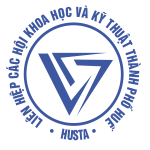Wearing a medical mask is one of the prevention measures that can limit the spread of certain respiratory viral diseases, including COVID-19. However, the use of a mask alone is insufficient to provide an adequate level of protection, and other measures should also be adopted. Whether or not masks are used, maximum compliance with hand hygiene and other IPC measures is critical to prevent human-to-human transmission of COVID-19. WHO has developed guidance on IPC strategies for home care12 and health care settings11 for use when COVID-19 is suspected.

Community settings Studies of influenza, influenza-like illness, and human coronaviruses provide evidence that the use of a medical mask can prevent the spread of infectious droplets from an infected person to someone else and potential contamination of the environment by these droplets. 13 There is limited evidence that wearing a medical mask by healthy individuals in the households or among contacts of a sick patient, or among attendees of mass gatherings may be beneficial as a preventive measure. 14-23 However, there is currently no evidence that wearing a mask (whether medical or other types) by healthy persons in the wider community setting, including universal community masking, can prevent them from infection with respiratory viruses, including COVID-19.
Medical masks should be reserved for health care workers. The use of medical masks in the community may create a false sense of security, with neglect of other essential measures, such as hand hygiene practices and physical distancing, and may lead to touching the face under the masks and under the eyes, result in unnecessary costs, and take masks away from those in health care who need them most, especially when masks are in short supply.
Persons with symptoms should:
• wear a medical mask, self-isolate, and seek medical advice as soon as they start to feel unwell. Symptoms can include fever, fatigue, cough, sore throat, and difficulty breathing. It is important to note that early symptoms for some people infected with COVID-19 may be very mild;
• follow instructions on how to put on, take off, and dispose of medical masks;
• follow all additional preventive measures, in particular, hand hygiene and maintaining physical distance from other persons.
All persons should:
• avoid groups of people and enclosed, crowded spaces;
• maintain physical distance of at least 1 m from other persons, in particular from those with respiratory symptoms (e.g., coughing, sneezing);
• perform hand hygiene frequently, using an alcohol-based hand rub if hands are not visibly dirty or soap and water when hands are visibly dirty;
• cover their nose and mouth with a bent elbow or paper tissue when coughing or sneezing, dispose of the tissue immediately after use, and perform hand hygiene;
• refrain from touching their mouth, nose, and eyes. In some countries masks are worn in accordance with local customs or in accordance with advice by national authorities in the context of COVID-19. In these situations, best practices should be followed about how to wear, remove, and dispose of them, and for hand hygiene after removal.
Persons with symptoms should:
• wear a medical mask, self-isolate, and seek medical advice as soon as they start to feel unwell. Symptoms can include fever, fatigue, cough, sore throat, and difficulty breathing. It is important to note that early symptoms for some people infected with COVID-19 may be very mild;
• follow instructions on how to put on, take off, and dispose of medical masks;
• follow all additional preventive measures, in particular, hand hygiene and maintaining physical distance from other persons.
All persons should:
• avoid groups of people and enclosed, crowded spaces;
• maintain physical distance of at least 1 m from other persons, in particular from those with respiratory symptoms (e.g., coughing, sneezing);
• perform hand hygiene frequently, using an alcohol-based hand rub if hands are not visibly dirty or soap and water when hands are visibly dirty;
• cover their nose and mouth with a bent elbow or paper tissue when coughing or sneezing, dispose of the tissue immediately after use, and perform hand hygiene;
• refrain from touching their mouth, nose, and eyes. In some countries masks are worn in accordance with local customs or in accordance with advice by national authorities in the context of COVID-19. In these situations, best practices should be followed about how to wear, remove, and dispose of them, and for hand hygiene after removal.
Mask management
For any type of mask, appropriate use and disposal are essential to ensure that they are effective and to avoid any increase in transmission. The following information on the correct use of masks is derived from practices in health care settings.
• Place the mask carefully, ensuring it covers the mouth and nose, and tie it securely to minimize any gaps between the face and the mask.
• Avoid touching the mask while wearing it.
• Remove the mask using the appropriate technique: do not touch the front of the mask but untie it from behind.
• After removal or whenever a used mask is inadvertently touched, clean hands using an alcohol-based hand rub or soap and water if hands are visibly dirty.
• Replace masks as soon as they become damp with a new clean, dry mask.
• Do not re-use single-use masks.
• Discard single-use masks after each use and dispose of them immediately upon removal.








